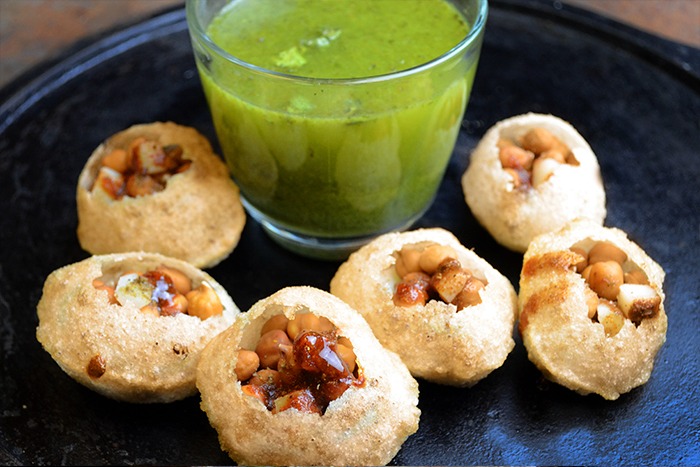Golgappa Online
- Home
- |
- Golgappa Online

golgappa online
He picked up a round and flaky ‘crepe’, made out of ‘sooji’ and with a soft prod of his thumb, dug a hole in the midst of it. Following came boiled potatoes, onion, and chickpeas, which pushed inside skillfully in the blink of an eye. The top of a big steel utensil was eliminated, which disclosed green-colored water with ‘boondi’ wafting on top of it. With rapid action, he ladled the crepe in the water and spotted it on the small paper bowl, which I was clasping in my hand while dribbling. I picked up the ensemble and shoved the full thing in my jaws. The aroma riot that erupted in my palate was a delicious occasion that established a space of its own in my mind and recollections.
The striking picture interpreted above is ‘Spiritus Mundi’, or the united remembrance of all Indians when it arrives at ‘Golgappa’, which handily authorizes as India’s favorite street food. The word ‘Golgappa’ can be cracked into two to get the significance of the dish: ‘Gol’ refers to the crispy shell, and ‘gappa’ refers to the eating method since Golgappa is chewed one at a time. Golgappa’s name varies swinging in different areas in India. In Haryana it is recognized as ‘Paani Patashi; in Madhya Pradesh ‘Fulki’; in Uttar Pradesh ‘Pani ke Batashe’ or ‘Padake’; in Assam ‘Phuska’ or ‘Puska’; ‘Gup-chup’ in parts of Odisha and ‘Puchka’ in Bihar, Nepal, Jharkhand, Bengal, and Chhattisgarh. Comprising of a spherical valley ‘puri’, restored with a variety of flavored water, tamarind chutney, potato, onion, or chickpeas, Golgappa online from Samosa Singh.
The tale of Golgappa has two editions to it. One is the mythical one and the other, ancient. The mythical story of the Golgappa could be tracked to the ‘Mahabharata’. As per the story, when a newly-wedded Draupadi arrived home, she was given a chore by her mother-in-law Kunti. As the Pandavas were dwelling in exile, they had to organize with limited reserves. Kunti needed to quiz if her new daughter-in-law would be able to organize with them. So she gave Draupadi some scrap vegetables and just sufficient wheat silver to make one puri. She notified her to make food that would fulfill the craving of all her sons. It is understood that this was when the new bride developed an early difference of Golgappa. Historically, it is thought that ‘Phulki’, understood to be the antecedent to Golgappa, early arisen in Magadh. However, the someone who formulated it is lost in the pages of the past. Though these could be regarded as the precursors to Golgappa online, the ingredients used might be very several. Two imporant components of Golgappa are potato and chili and both came to India 300-400 years ago. Central food historian, Pushpesh Pant believes that Golgappa rose around Uttar Pradesh and Bihar about 100-125 years ago. According to him, it is feasible that Golgappa was made out of Raj-Kachori. In between other intricacies, a person made a small ‘puri’ and consumed it.